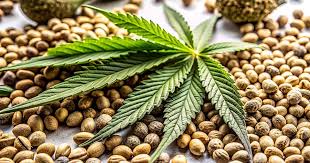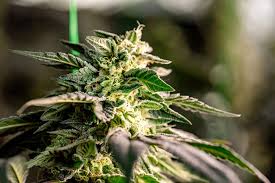
For those stepping into the cannabis cultivation world, autoflower weed seeds have emerged as a popular choice. These seeds, characterized by their unique growth patterns, are a game-changer for both novice and experienced growers. Let’s dive deeper into what makes autoflowering seeds so appealing and how you can successfully cultivate them.
What are Autoflower Weed Seeds?
Autoflower weed seeds are a specific type of cannabis seed that transitions from the vegetative phase to the flowering phase automatically, without the need for a change in light cycles. This trait is genetically derived from the Cannabis ruderalis species, which has adapted to grow in short seasonal periods with limited sunlight. As a result, autoflowering strains are typically faster to harvest compared to traditional photoperiod strains.
Benefits of Autoflower Weed Seeds
There are numerous advantages to cultivating autoflowering cannabis seeds. Here are some of the key benefits:
1. Speed of Growth
One of the primary advantages of autoflower weed seeds is their rapid growth cycle. While photoperiod plants can take anywhere from 3 to 6 months from seed to harvest, autoflowers can be ready in as little as 8 to 12 weeks. This speed allows growers to enjoy multiple harvests in a single season.
2. Easier for Beginners
For beginners, managing light cycles can often be a hassle. Autoflowering seeds eliminate this complication. Growers do not need to stress about adjusting light schedules; instead, they can focus on providing the right care and nutrients. This simplicity makes autoflowers an excellent choice for those just starting their cannabis cultivation journey.
3. Compact Size
Autoflowering plants tend to be smaller and bushier compared to their photoperiod counterparts. This compact size makes them suitable for indoor growing spaces with limited vertical clearance and also helps them remain discreet in outdoor gardens.
4. Resilience

A notable characteristic of many autoflower strains is their resilience to various environmental conditions. Autoflowers can often handle fluctuations in temperature and humidity better than photoperiod strains, making them ideal for novice growers who may not have perfect environmental controls.
Growing Autoflower Weed Seeds
While growing autoflowering cannabis can be simpler than other strains, some techniques can enhance your success. Here’s a step-by-step guide:
Step 1: Selecting Quality Seeds
Your journey begins with selecting high-quality autoflower weed seeds. Reputable seed banks and dispensaries often provide detailed information about strain genetics and growing conditions.
Step 2: Germination
Germination is a crucial phase. Many growers opt for the paper towel method, where seeds are placed between damp paper towels until they sprout. Others prefer soaking seeds in water for 24 hours before planting them directly in the soil.
Step 3: Initial Planting
Once germinated, the seeds can be planted directly into their final growing medium. Autoflowers do best in well-draining soil enriched with nutrients but be cautious about over-fertilizing.
Step 4: Light Requirements
While autoflowers can thrive under various light conditions, providing them with 18-24 hours of light (using either natural sunlight or grow lights) maximizes growth and yields. Remember that proper light intensity is crucial during both the vegetative and flowering stages.
Step 5: Nutrients and Watering

Feeding autoflowering strains needs a balanced approach. During the vegetative phase, use nutrient formulations high in nitrogen, and switch to a phosphorus and potassium-rich formula during flowering. Regular but moderate watering ensures robust growth; overwatering is a common mistake beginners make.
Step 6: Harvesting
Knowing when to harvest your autoflowering plants is vital for achieving optimal potency. Pay attention to the color of the trichomes (tiny resin glands on the buds). When they turn milky white with some amber tones, it’s time to harvest.
Common Mistakes to Avoid
Even with their ease of growth, autoplowers come with certain pitfalls that new growers should avoid:
1. Overwatering
Due to their compact size and growth speed, autoflowering plants are more susceptible to root rot. Ensure the soil dries out between waterings.
2. Ignoring Plant Training
Autoflowers can benefit fromLow-Stress Training (LST) techniques to maximize light exposure and yield. However, be gentle—these plants have a limited time to recover before flowering.
3. Poor Lighting
Under-lighting your auto-flower can impede growth and reduce yields. Ensure your light sources provide adequate coverage and intensity to support your plants’ growth.
Conclusion
Autoflower weed seeds represent a fantastic option for both novice and seasoned cannabis cultivators. With their rapid lifecycle, resilience, and manageable growth traits, they offer a low-stress way to enjoy cultivating cannabis. By understanding the specific needs and techniques for growing these remarkable plants, you can enjoy a rewarding yield and enhance your gardening experience.






















